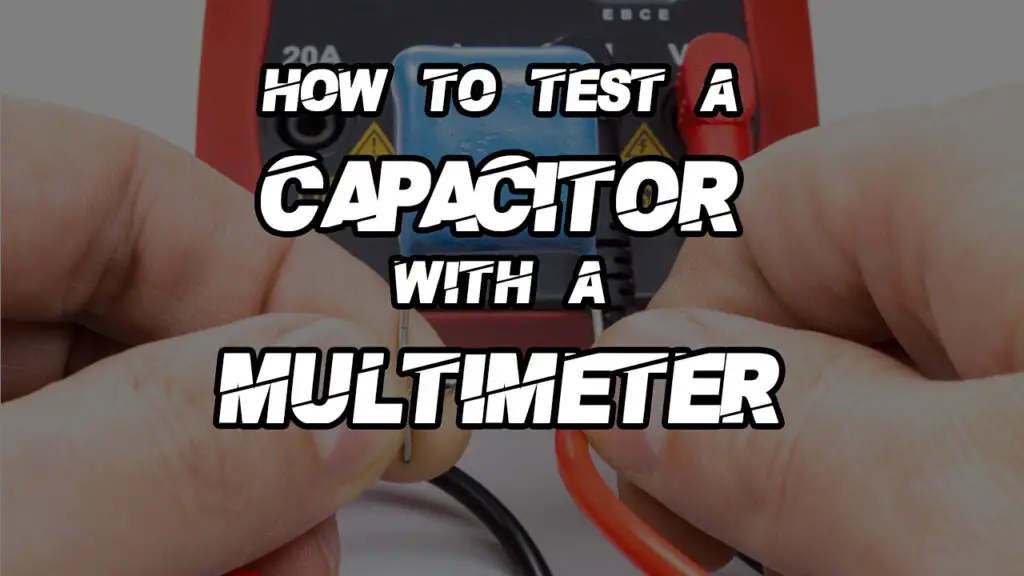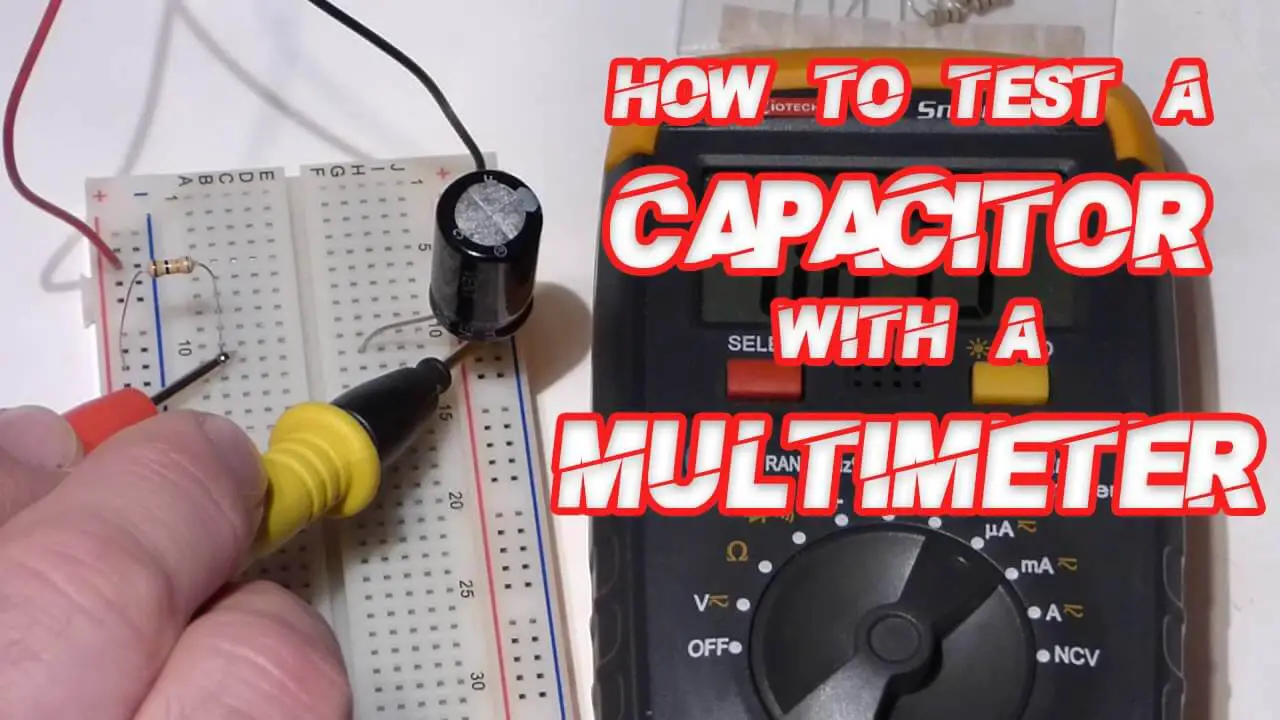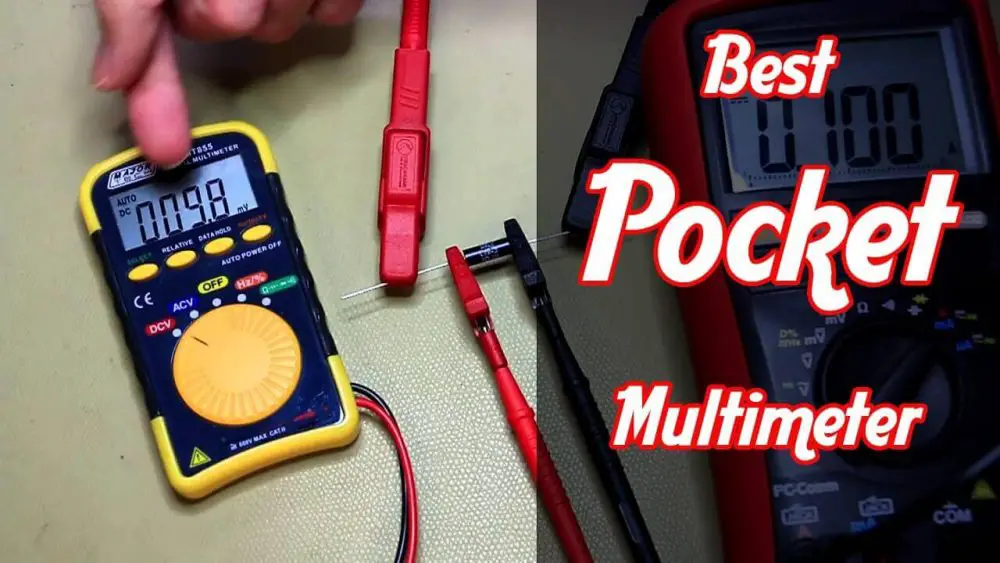How to test a capacitor with a multimeter
From power supply to limited voltage, capacitors have different duties and central parts of the electronic circuits. Sometimes, the working capacitor stops working, and you can’t find the reason. Additionally, there are multiple ways of testing a capacitor. In this article, we come to know How to test a capacitor with a multimeter?
This is a fundamental question that every user should learn of a multimeter. In this article, we would introduce the reasons behind the capacitor failure, its visual indication, and most importantly, test a capacitor with a multimeter.
Two methods of capacitor testing have been discussed here. But before we proceed, we would tell you first about the types of capacitors. It is necessary to let you have perfect testing.

Table of Contents
Types of capacitor
Generally, we divide the capacitors into two basic types. One is the polarized capacitor, and the other is a non-polarized capacitor. You may encounter any of two so, both types have been discussed for accurate testing.
The capacitor with zero implicit polarity is considered non-polarized. This type of capacitor has the electrolyte of ceramic or mica.
On the other hand, polarized capacitors offer implicit polarity. A typical type of electrolyte is present in this type. One main point to note is that you can only connect them in a specific way. You would see the respective symbol of positive and negative on each side.
Reason for capacitor failure
A capacitor may fail due to several reasons that you should know to become a professional.
- The capacitor may be aged and lose enough spark to perform the assigned functions.
- Extreme cold or heat around the capacitor may be the cause of failure. The dielectric system gets disturbed, leading to its collapse.
- The voltage value higher than the capacitor limit may convert dielectric into electrons. This conversion balances the way for short.
- With the high humidity, the terminals catch oxidation. As a result, a large volume of current is needed to replenish the layer of aluminum oxide. The result is a negative impact on the circuit.
- Chemical contamination is another contributing factor that disturbs the internal composition of a capacitor and destroys it.
Visual indication of capacitor failure
The disturbed capacitor may leave some indications that can be seen on its exterior surface. Check the shape of the capacitor. It might be swollen from the top or bottom side. This is a clear indication that the capacitor is at fault.
Moreover, the colour of the capacitor may change, or you would see the leaking electrolyte. If you see these changes, go and change the capacitor at once.
Testing of a capacitor with a multimeter
You may face a perfect capacitor from the outside, yet it is not functioning. Here, the multimeter serves you to test it. Below, we have discussed two methods to ensure the perfect testing with a multimeter.
Method 1- Capacitor Testing With A Digital Multimeter
Discharging of capacitor
Disconnect the capacitor from the power supply. Make sure that the capacitor is discharged fully to avoid burning. If the capacitor is not fully discharged, you can do it with the help of a bulb or metal screw for high and low voltage capacitors, respectively.
Set Ohm range
The next step is to prepare the multimeter to read a high Ohm value. This is done by making the setting 1000 Ohms, at least.
Connection of leads with terminals
Now, you should proceed by connecting multimeter cables with the terminals of the capacitor. At this point, you should consider whether the capacitor is polarized or not. For the polarized one, we advise you to join black leads with negative terminals. The other lead, red, is meant to attach with a positive terminal. For non-polarized capacitors, there is no restriction in this scenario. You can go for any style.
Check the readings
Note the readings of the digital multimeter and compare them to the printed value resistance on the capacitor body.
Repeat the procedure and draw a conclusion
We recommend you take the readings several times. For a good capacitor, all the readings would be the same. For a bad capacitor, each value would have a sufficient gap between them. Alternatively, for a zero value, you can conclude the capacitor has been dead.
Method 2- Check capacitance in capacitive mode
If you have an advanced type of multimeter that features a capacitor mode, then you can use this method.
Set mode on a multimeter
Turn the knob of the multimeter to make the capacitance mode functional.
Capacitor discharging
The capacitor houses the power, so it is essential to discharge the capacitor fully. You can do it with a bulb or metal screw, depending on the voltage level. Disconnect the faulty capacitor from the board for easy detection.
Connection of leads and terminals
After being satisfied with the completion of the above settings, join the multimeter leads with capacitor terminals. This step would result in the readings on the screen.
Check the reading and conclude
Compare the appeared readings on the digital screen to the capacitor box. With the same reading, you can continue the usage of the capacitor. Congratulations! Your capacitor has a good condition. On the other hand, with very low or zero results, we are sorry, your capacitor is no more. It would help if you replaced the old capacitor with a new one.
Note:
Try not to touch the probes. It would lead to the disturbance of dielectric that would result in the inaccurate reading.
Frequently Asked Questions
There might be a smoke or burning smell in your system. Or the system gets shut down in the presence of a bad capacitor.
A faulty capacitor lost its colour and shape. It gets swell from the top.
Fixed the voltmeter to note DC voltage and connect it with the capacitor. Join the positive lead with the positive and negative with the negative and note the starting reading of the voltage.
Final verdict
We have discussed how to test a capacitor with a multimeter as it is a well-searched query. No doubt, there are other measuring procedures, but multimeters do not do these. That is the reason we have not discussed it here.
You can use the multimeter for other types of measurement according to your work. After reading this post, we are sure you would never fail to test the capacitor. Our detailed article on how to test a capacitor with a multimeter helps you in finding the issue.
Related posts:
What is the Best Multimeter For Automotive Use?





